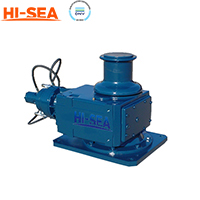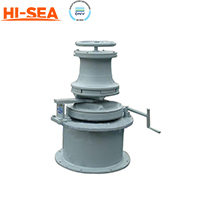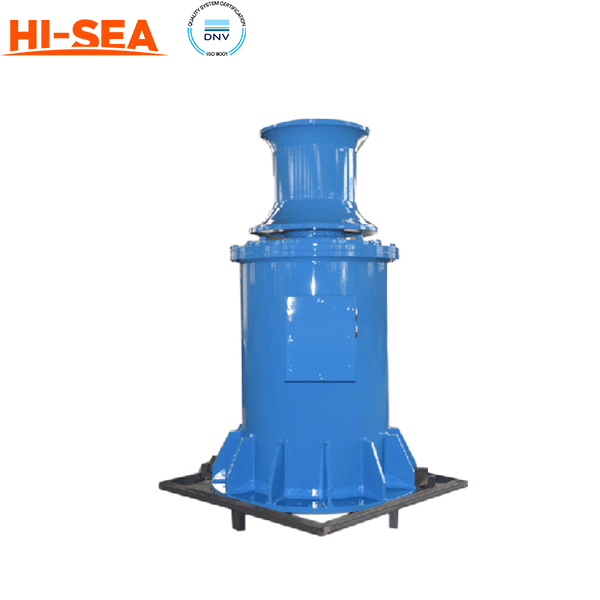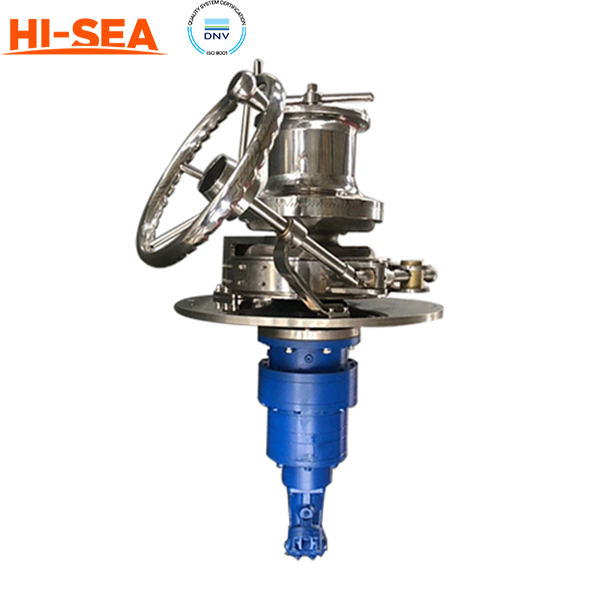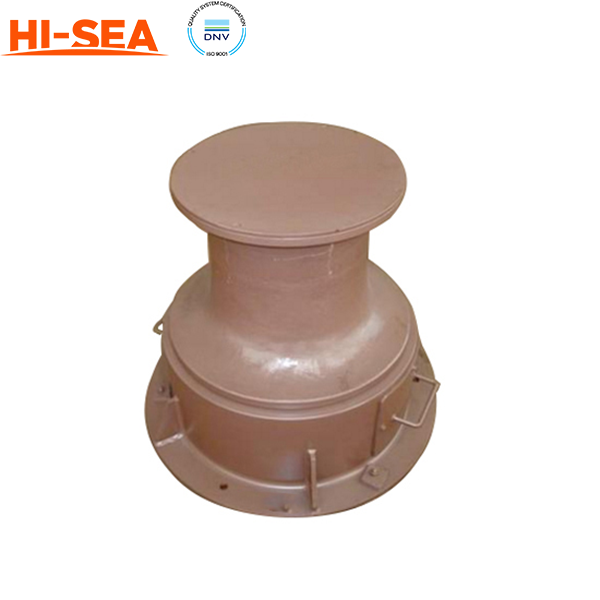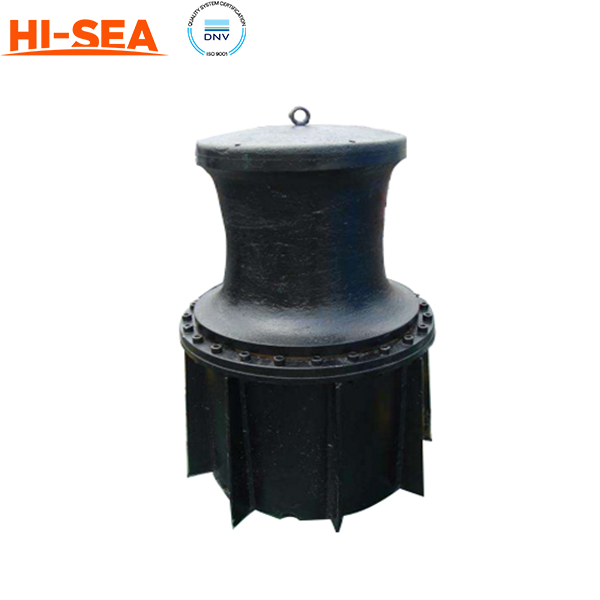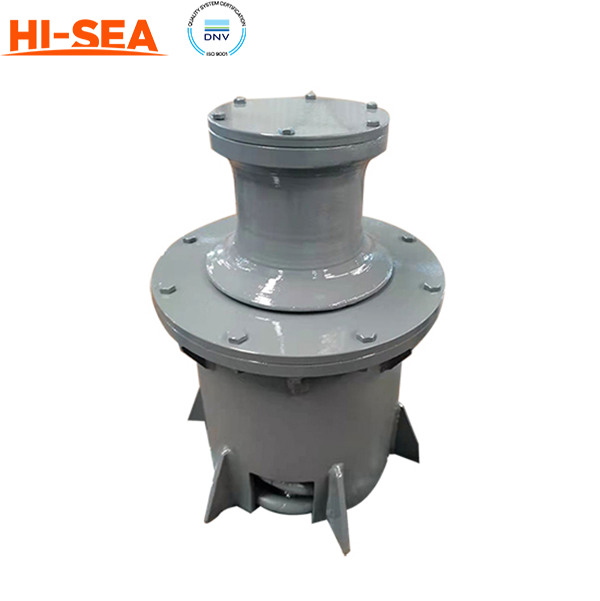MARINE & OFFSHORE EQUIPMENT
- Dredging Equipment
- Marine Deck Machinery
-
Marine Mooring Equipment
-
Marine Anchor
- AC-14 HHP Anchor
- Admiralty Anchor
- Beldt Stockless Anchor
- Bruce Anchor
- Spek Anchor
- Danforth HHP Anchor
- Delta High Holding Power Anchor
- GB11579-89 Light Weight Anchor
- Hall Anchor
- High Holding Power Mastrosov Anchor
- Hot Dip Galvanized Anchor
- Japan Stock Anchor
- JIS Stockless Anchor
- Pool Anchor
- Single Fluke Anchor
- Stainless Steel Anchor
- Stevpris MK5 Anchor
- Stingray Anchor
- US Navy Stockless Anchor
-
Marine Anchor Chain
-
Marine Shackle
- Kenter Shackle
- D Type Joining Shackle
- Pear Shaped Shackle
- Anchor Swivel Shackle Type A
- Anchor Swivel Shackle Type B
- Buoy Shackle Type A
- Buoy Shackle Type B
- C Type Detachable Connecting Link
- D Shackle
- Forelock Shackle
- Anchor Chain Swivel Group
- Straight Shackle
- Anchor Shackle
- Marine Triangle Plate
- Anchor Chain Swivel
- Anchor Chain Joining Shackle
- Anchor Chain End Shackle
- Slim Kenter Shackle
-
Chain Chaser
-
Marine Bollard
-
Marine Chock
-
Marine Fairlead
-
Marine Chain Stopper
-
Marine Mooring Reel
-
Marine Towing Bracket
-
Mooring Rope
-
Marine Towing Hook
-
Marine Shark Jaw
- Marine Fender
-
Marine Buoy
- Marine Floating Pontoon Dock
-
Marine Anchor
- Aquaculture Equipment
- Marine Outfitting Equipment
- Marine Propulsion System
-
Marine Painting
-
Marine Auxiliary Machinery
- Marine Air Compressor
- Marine Air Receiver
- Marine Sewage Treatment Plant
-
Marine Diesel Generator Set
- Marine Oil Water Separator
- Ballast Water Management System
- Marine Hydrophore
- Marine Calorifier
- Seawater Desalination Plant
-
Marine Oil Separator
- Marine Fuel Oil Supply Unit
- Marine Heat Exchanger
-
Marine Hot Well Unit
-
Marine Incinerator
-
Marine Boiler
-
Marine Valve
- JIS Marine Valve
- DIN Marine Valve
- ANSI Marine Valve
- GB Marine Valve
- CB Marine Valve
- CBM Marine Valve
-
Marine Gate Valve
-
Marine Globe Valve
-
Marine Angle Globe Valve
-
Marine SDNR Valve
-
Marine Angle SDNR Valve
-
Marine Check Valve
-
Marine Storm Valve
-
Marine Butterfly Valve
-
Marine Quick Closing Valve
-
Marine Fire Valve
-
Marine Self Closing Valve
- Marine Valve Accessories
-
Marine Pump
- Marine Centrifugal Pump
- Marine Screw Pump
-
Marine Gear Pump
-
Marine Vortex Pump
-
Marine Ejector Pump
-
Marine Diaphragm Pump
-
Marine Piston Pump
-
Marine Fire Pump
-
Marine Emergency Fire Pump
-
Marine External Fire Pump
-
Marine Ballast Water Pump
-
Marine Fuel Pump
-
Marine Lubricating Oil Pump
-
Marine Bilge Pump
-
Marine Sewage Pump
-
Marine Domestic Water Pump
-
Marine General Pump
-
Marine Cargo Oil Pump
-
Marine Hand Pump
- Marine Pump Parts
- Marine Life-saving Equipment
- Fire-fighting Equipment
- Marine Cable
- Marine Electrical Equipment
- Marine HVAC
-
Labour Protection Appliance
- Marine Decorative Material
-
Marine Anode
- Marine Pipe Fitting & Flange
- Marine Instrument
- Ship Building Equipment
INDUSTRY EQUIPMENT
- Hoisting Equipment
- Welding Machine & Material
-
Cutting Machine
- Container Securing Fitting
- Link Chain
- Container & Storage Equipment
-
Diesel Generator Set
- Other Equipment and Tools
- Petrochemical Equipment
- Fiber Reinforced Plastics
- Polymer Materials
- Environmental Protection Series
- Geo-products and Building Materials
- Metal Mesh
- Steel Grating
-
Earthwork Teeth
-
Turnbuckle
STOCK LIST
Contacts
 Tel:+86-23-67956606
Tel:+86-23-67956606
 FAX:+86-23-67956622
FAX:+86-23-67956622
 Email:manager@cqhisea.com
Email:manager@cqhisea.com
Working Time: 9:00--17:00
Working Day: Monday to Friday Website: www.cqhisea.com

Marine Hydraulic Capstan
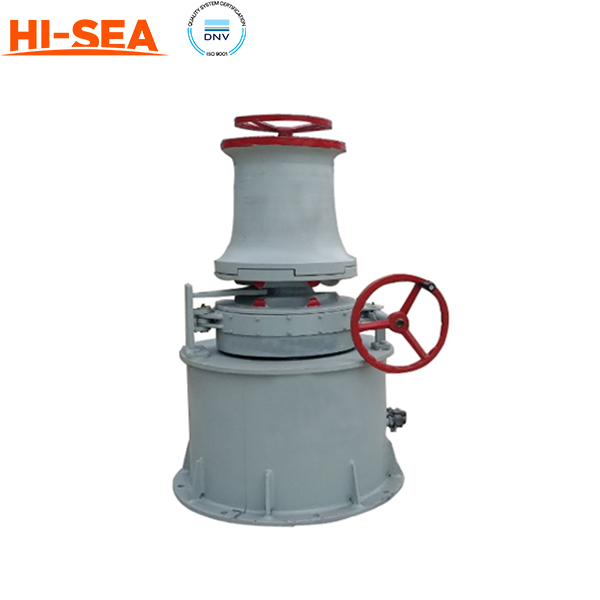
Marine Hydraulic Capstan
Application
A marine hydraulic capstan is a type of winch commonly used on ships and other marine vessels to haul or hoist heavy objects or anchor chains. The capstan uses hydraulic power to rotate a drum or cylindrical shaft around which a rope or cable is wound. The hydraulic system provides the necessary power and control to raise or lower the load, while the capstan's design ensures that the rope or cable is wound evenly and securely. Marine hydraulic capstans are typically used in a variety of marine applications, including mooring, anchor handling, towing, and cargo handling. They are often located on the deck of a ship and operated by a crew member using controls located nearby. The hydraulic system may be powered by an onboard engine or by a separate power source, such as a hydraulic pump. Marine hydraulic capstan can realize the stepless control of the capstan head by hydraulic or frequency driven capstans.
According to shaft center line orientation, there are hydrulic vertical capstan and hydraulic horizontal capstan. Hydraulic vertical capstan is generally situated above the deck, and the motor and gearbox below. It suits smaller powerboats or sailboats, which can be used for anchor gypsy, or auxiliary line hauling from any direction. The hydraulic horizontal capstan is ideal for horizontal handling of chain only anchor gypsy. It is mounted completely above deck. The selection of a hydraulic vertical or horizontal capstan is largely determined by your specific uses, deck thickness and under deck space.
For more marine hydraulic capstan specifications, please click here.
Material
Cast steel, 316L stainless steel.
Advanteges and Features
1. Compact structure, high strength;
2. Local control and remote control;
3. Easy for installation, maintenance, lubrication and inspection;
4. Corrosion resistance, long lifespan;
5. With or without gypsy;
6. Reliable service, high security;
7. Can be customized according to your requirements;
8. Manual or hydraulic brake and clutch;
9. Approved by BV, LR, RINA...
Marine Hydraulic Capstan Classification
Main Technical Parameters
Marine Hydraulic Capstan Classification
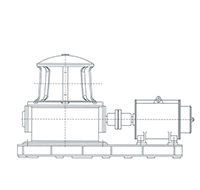
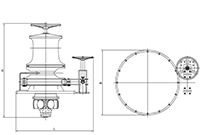
|
Chain Dia (mm) |
Working Load(KN) |
Working Speed(m/min) |
Warping Load(KN) |
Warping Speed(m/min) |
Wire Dia.(mm) |
Motor Power(kw) |
| Φ11/14 | 5.9/7.4 | ≥12 | 5 | ≥10 | Φ11 | 4 |
| Φ16/17.5 | 10.9/13.0 | ≥12 | 8 | ≥10 | Φ13 | 7.5 |
| Φ19/22 | 15.3/20.6 | ≥12 | 10 | ≥10 | Φ13 | 11 |
| Φ24/26 | 24.5/28.7 | ≥9 | 20 | ≥8.5 | Φ15 | 11 |
| Φ28/30 | 33.3/38.3 | ≥9 | 30 | ≥8.5 | Φ17.5 | 15 |
| Φ32/34/36 | 43.5/49.1/55.1 | ≥9 | 30 | ≥8.5 | Φ17.5 | 18.5 |
| Φ38/40/42 | 61.4/68.0/75.0 | ≥9 | 50 | ≥8.5 | Φ20.5 | 30 |
| Φ44/46/48 | 82.3/89.9/97.9 | ≥9 | 50 | ≥8 | Φ26 | 37 |
| Φ50/52/54 | 106.3/114.9/123.9 | ≥9 | 60 | ≥8 | Φ26 | 45 |
| Φ56/58/60 | 133.3/143/153 | ≥9 | 60 | ≥8 | Φ26 | 55 |
|
Above specifications only for reference, we can supply various capstans according to your requirements. |
||||||
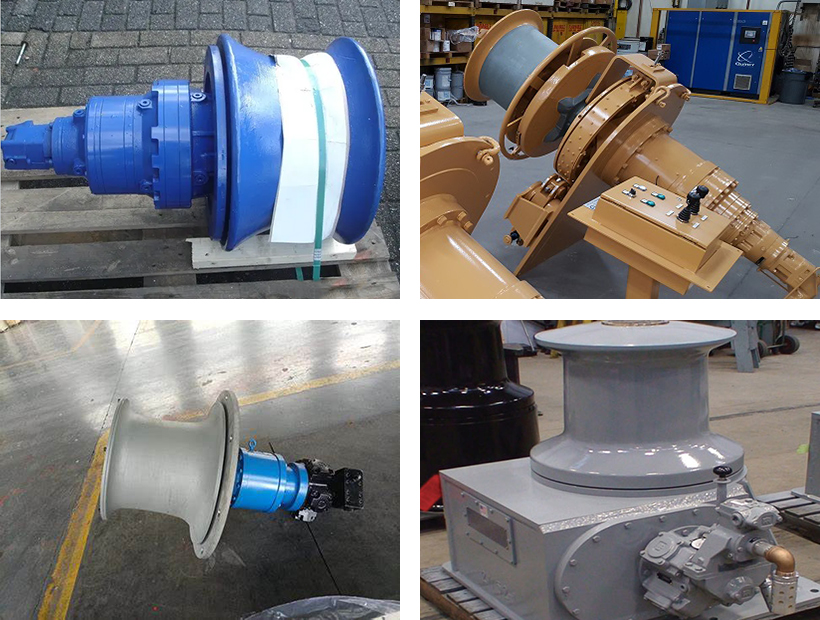
What are the common faults of marine hydraulic capstan in use?
Marine hydraulic capstans are important pieces of equipment that are used to handle lines and anchors on ships. They are exposed to harsh marine environments and are subject to wear and tear, which can lead to faults and failures. Here are some common faults that can occur during the use of marine capstans:
1) Electrical faults: The capstan's electrical system can experience faults, such as motor overload, short circuits, or loose connections. These can result in the capstan stopping or malfunctioning.
2) Mechanical faults: The capstan's mechanical components, such as gears, bearings, and brakes, can wear out or become damaged. This can lead to decreased performance, increased noise, or even complete failure of the capstan.
3)Corrosion: Marine environments are harsh, and the capstan's components can become corroded over time, particularly if the capstan is not properly maintained. This can weaken the structural integrity of the capstan and result in failure.
4 Overloading: If the capstan is subjected to loads beyond its capacity, it can lead to premature failure of the capstan's components, such as the motor, gearbox, and brakes.
5) Lubrication issues: Proper lubrication is critical to the smooth operation and longevity of the capstan. If the capstan is not properly lubricated, it can lead to increased wear and tear, noise, and decreased performance.
These are some common faults that can occur during the use of marine hydraulic capstans. It's important to perform regular maintenance, inspections, and adhere to manufacturer's recommendations to prevent or quickly address any faults and ensure safe and efficient operation of the capstan.


